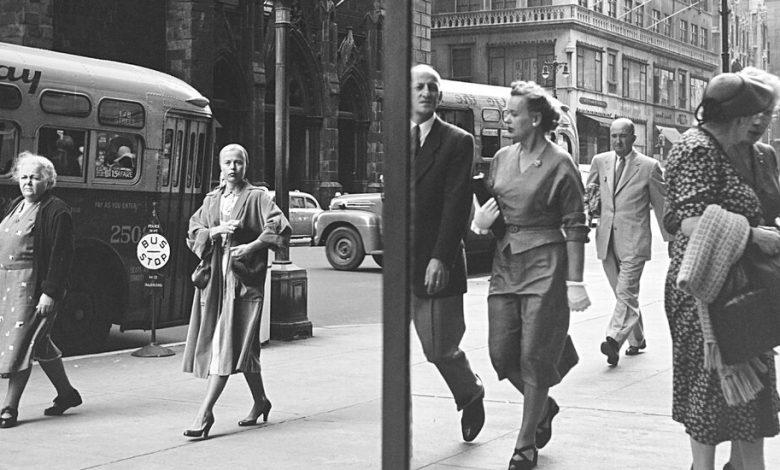How Groundbreaking Is Vivian Maier’s Photography?

Vivian Maier was a disappearance artist. Street photographers typically keep hidden when shooting, but Maier receded in every aspect of her life. Her now well-known story, which has contributed greatly to her posthumous fame, is that while she supported herself through employment as a nanny, her true vocation was photography. She worked primarily in black-and-white with a square-format Rolleiflex, the same camera used by many of the greats, including Diane Arbus, Richard Avedon and Bill Brandt.
Her photographs entered the public realm in 2007, when John Maloof, then a real-estate agent with a passion for Chicago history, bought the contents of her unpaid storage locker. After examining the contents, he located other boxes, eventually amassing more than 100,000 negatives and slides, as well as about 3,000 prints. He has dedicated himself to promoting her legacy, and co-directed an Oscar-nominated documentary film, “Finding Vivian Maier” (2014). Maier, who died in 2009, at 83, never met the man who would establish her reputation.
“Vivian Maier: Unseen Work,” at Fotografiska until Sept. 29, is the first New York museum show devoted to Maier and one of the largest exhibitions ever mounted of her photographs. Organized by Anne Morin, director of diChroma Photography, it was first seen in a different iteration at the Musée du Luxembourg in Paris in 2021. Thematically arranged and attractively installed, with more than 200 works (including color photos taken with a Leica, Super 8 films and audio recordings), it offers an unusual opportunity to assess Maier’s achievement.
The color photographs are mostly less interesting than the black-and-white ones. The films are completely unremarkable. But in the photos she made with the Rolleiflex, the acuteness of her eye is undeniable. Again and again, Maier captures a compelling detail, an unusual face, a scene of striking visual interest. She also has a flair for composition. But does that mean, as the wall label proclaims, that she “belongs alongside some of the greatest names in photographic history, such as Robert Frank, Diane Arbus, Berenice Abbott, and Henri Cartier-Bresson”?
Walking through this exhibition, I thought continually of those artists — and many others. Her shadowed self-portraits recall Lee Friedlander, as does a scene of city pedestrians that is divided by a vertical post, half seen in reflection and half viewed directly. Garry Winogrand came to mind when I gazed at an amusing shot of two men quizzically bent over a serpent-like hose, and a marvelous picture of a couple strolling nonchalantly past a man and woman in a heated confrontation. Two old women wearing peculiar hats and seated on a park bench might have been taken by Arbus. A picture of two girls in front of a wall chalked with a stick drawing of a child evokes Cartier-Bresson. Mannequins in a shop window reprises a Surrealist subject that, long before Maier, was explored by Eugène Atget and Man Ray.
